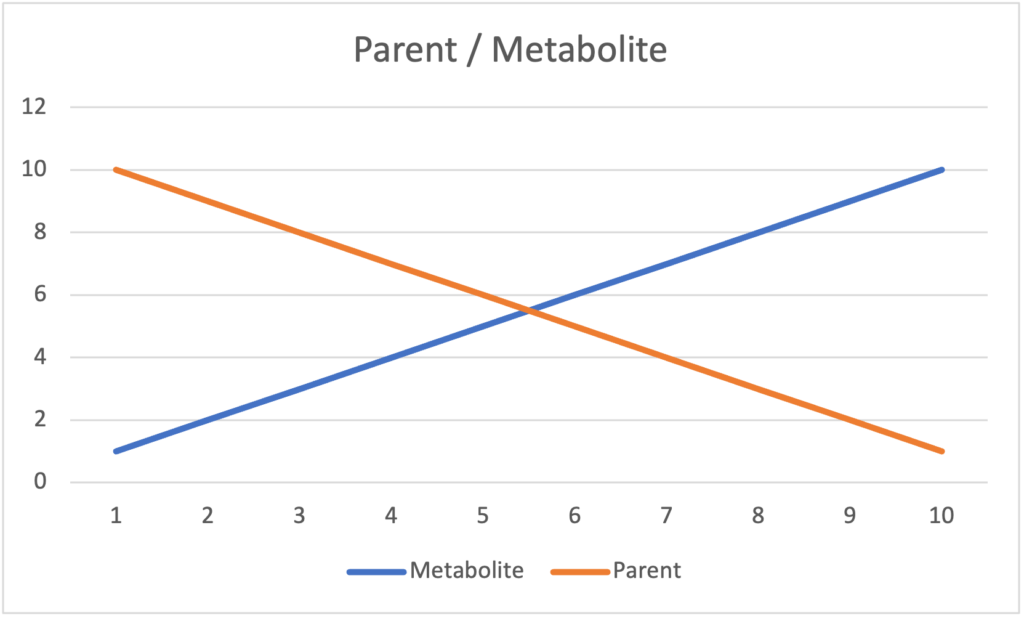
A metabolite is defined as “a substance produced during metabolism, which is the process of digestion and other bodily chemical processes”. Essentially anything you put into your body is metabolized in one way or another. Food, for example, metabolizes into vitamins, proteins, fats, sugars, etc. Some food metabolites are useful chemicals your body needs, and some are discarded and excreted as waste byproducts.
Just like food, some substance metabolites are used by your body for various functions, and some are discarded and excreted as waste byproducts. In almost all cases, the process does not metabolize 100% of whatever was ingested, and to varying degrees is excreted unchanged from what was ingested (we call this the “parent compound”). A good common example of this is when you take too much Vitamin C, some of it is excreted unchanged; this is why we sometimes see bright orange urine when we take Vitamin C.
So why does this matter to us regarding drug testing? Since both the parent and the metabolite compounds are present in urine, it is important for a drug test to detect both. Moreover, the metabolites are detectable in urine much longer than their parents. Because of the longer window of detection, virtually all screens for drugs of abuse use metabolites as their target substance; this target substance is also known as the calibrator. When we talk about the cut-off level of a test, we are referring to the concentration at which the calibrator substance (again, typically the metabolite) will trigger a positive result.
While extremely oversimplified, the chart below gives us an idea of how parents and metabolites are excreted via urine. We can see at the far-left side of our timeline (we’ll call that the “onset” of the window of detection), the level of parent substance being excreted is much higher than the metabolite. Then about halfway through our timeline, we see equal amounts of parent and metabolite. Lastly, toward the “outset” of our window of detection we can still detect the metabolite, but the parent has fallen below the concentration needed for detection. So, for example, when testing for Fentanyl we will be able to detect Norfentanyl – its metabolite – for a much longer period of time after use than the parent Fentanyl.

